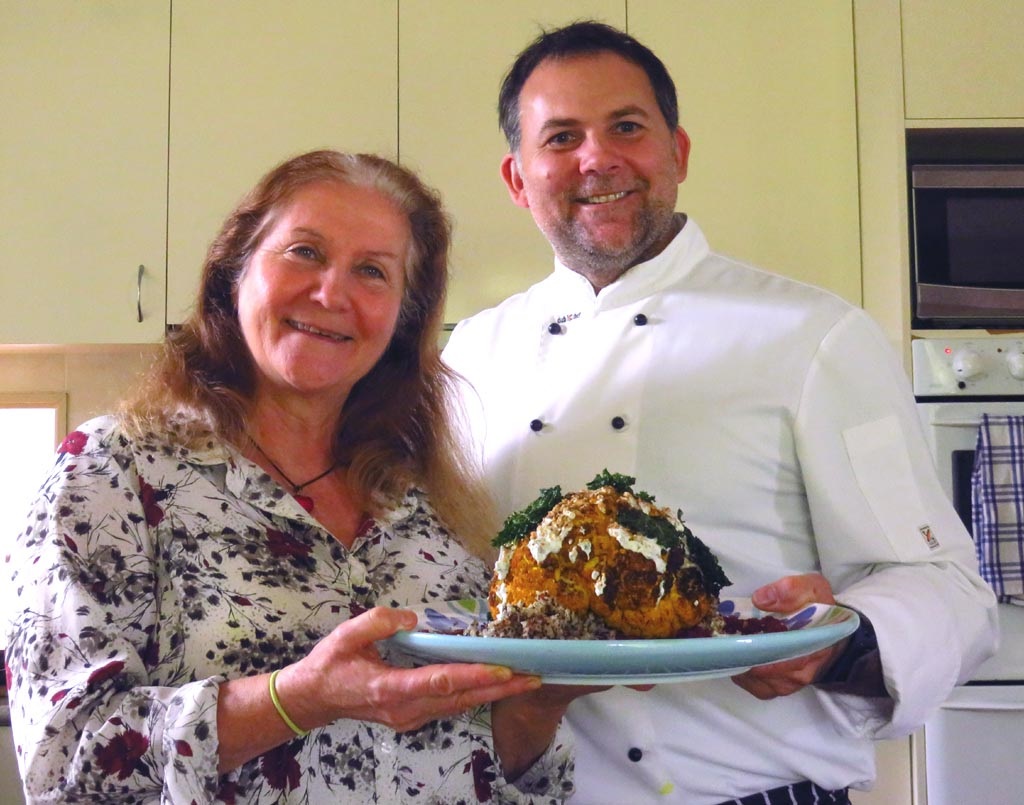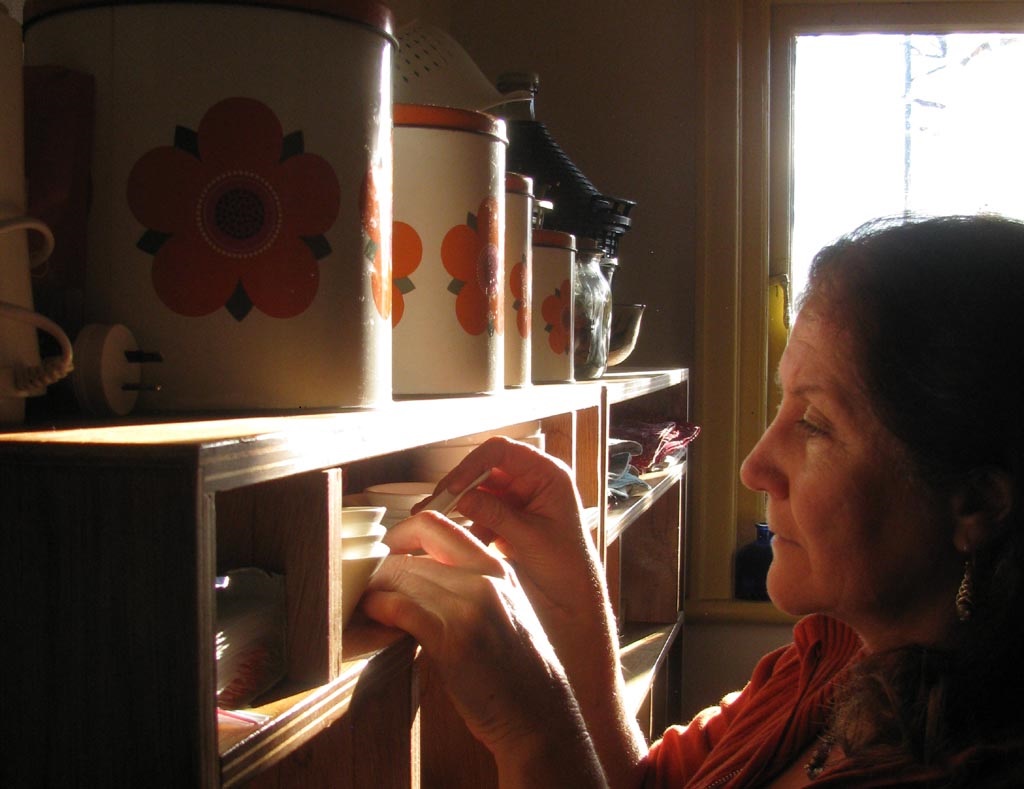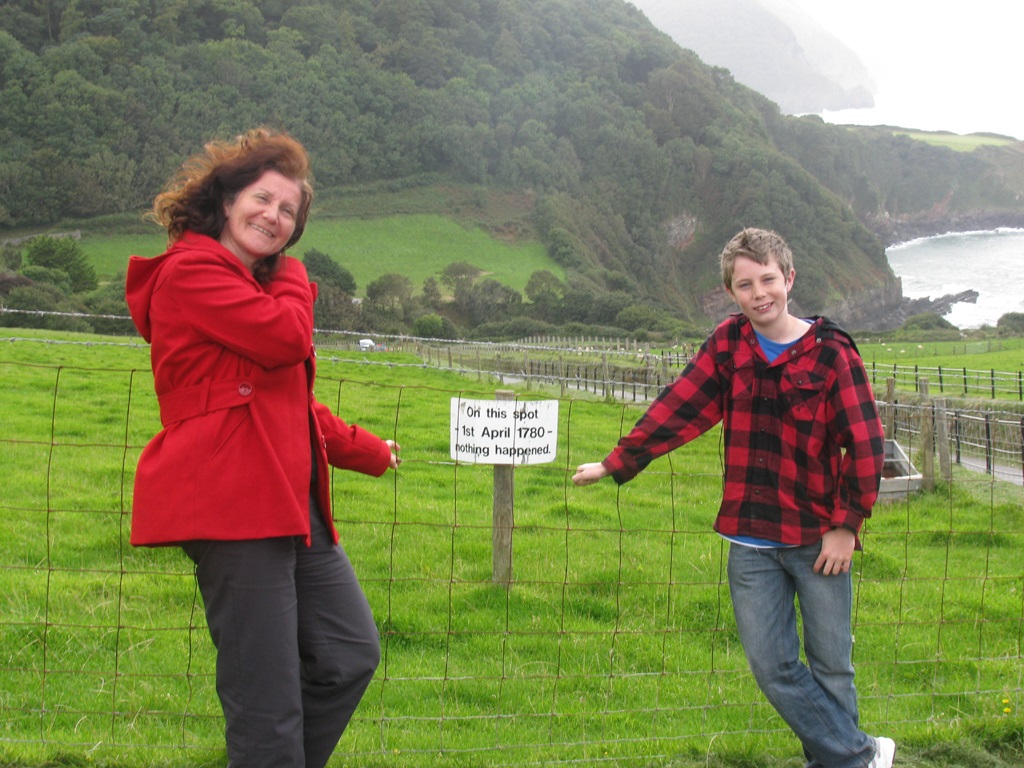Editor’s note: Maribel wrote this post for the International Day of People with Disabilities, which occurs on December 3. According to the organizers, “It is a day for optimism – to look towards the future and the creation of a world where a person is not characterized by their disabilities, but by their abilities.”
Creating a Happiness Pie
When invited recently to give the keynote address for the Association of Vision Rehabilitation Therapists (AVRT), I couldn’t resist linking the theme with my ingredients to create a “happiness pie” for people learning to live with vision loss. The theme of the conference was “Tickling the Taste Buds: Sweet Opportunities for Success.” I used this theme, adding to our collective mixing bowl how the similarities between vision loss and success use the bitter and the sweet to produce great results. Reaching for a slice of happiness when dealing with vision loss can seem challenging to achieve. Knowing the following human qualities, which I call “ingredients,” will help you make an excellent happiness pie.
Ingredient 1: Acceptance
No matter the situation, vision loss or other challenge, until we can accept what is happening, we can’t begin to look for solutions. Acceptance, which relies on attitude, is like salt and pepper enhancing our life situations. Accepting something doesn’t mean we must like what is happening, but we can acknowledge the situation and find a workable balance. As in cooking, where salt and pepper work together in balancing flavors, acceptance and a good attitude also enhance a more optimistic perspective. We become open to finding ways to solve problems to enrich our lives and manage vision loss.
Ingredient 2: Cooperation
 Maribel and Chef Holding a Completed Food Dish
Maribel and Chef Holding a Completed Food Dish
Imagine a delicious tomato salad without the herb flavor of basil. Or a freshly cooked donut without the center oozing with a sweet jam. It would not taste the same. Something is missing because it is a natural part of life to bring certain elements together that enhance one another. Whether it be a dish or a situation, cooperation is essential. It allows other people’s ideas, skills, and strategies to combine with your own to find solutions.
Know your strengths, your gifts, and your limitations. Then collaborate with those waiting to be a part of your formidable team.
Ingredient 3: Courage
Courage is that voice within that will either say, “Yes. I’ll give that challenge a go. Or “No. No way am I doing that.” Do you tend to shrink back rather than push forward if faced with anything unfamiliar? When living with vision loss, the energy required to summon an ounce of courage on some days can be too much effort. What if courage was simply another spice in life’s pantry? Courage impels you to act and make a choice, even if it is scary initially.
Hershey Chocolates and You
 Hand Holding Hershey Bar
Hand Holding Hershey Bar
Welcome Milton Hershey of the Hershey Chocolate Corporation, which produces over 70 million candies daily. In 1876, Hershey set up his candy shop in Philadelphia. Six years later, it failed. He tried again, this time in New York. Alas, this venture failed too. It took him three determined attempts to make his dream a reality and a huge success.
What can we learn from Mister Hershey?
He must have known that Failure is a big part of success. When seen as a friend, failure gives you the courage to try again. So, the next time you are feeling you need some courage to face a challenge, grab a Hershey chocolate bar and tell that little voice within that you are saying “YES” this time.
Ingredient 4: Organize the Chaos
 Maribel Organizing Shelves
Maribel Organizing Shelves
I once complained to a friend about coping with chaos because, as a visually impaired person, it helps me manage sight loss when everything in our home has a place. She said, “You can’t make an omelet without first scrambling the eggs.” Her comment helped me look at chaos from a different perspective. Sometimes it is necessary and can lead to better things. The way I prefer to manage the frustration borne from chaos is to appreciate it and then learn from it. When chaos takes over, take a deep breath. This is the scrambling phase; it is going to get better. The moments of total uncertainty may help you develop more practical life skills. The sweeter way to view frustration is to try other methods of organizing the chaos to reach a manageable solution.
Ingredient 5: Humor
 Maribel and Son Standing in Front of Humorous Sign
Maribel and Son Standing in Front of Humorous Sign
This is an essential ingredient – the more humor you add, the better life tastes. A good laugh helps balance, relax the mind and body, and let go of anxiety, frustration, and stress. Finding humor is my favorite way to cope with the silly things I find myself doing because of my vision loss, which is often funnier in hindsight. A generous sprinkle of humor goes a long way.
Ingredient 6: “Sense Ability”
Having the ability to trust your other senses, including your intuitive feelings, is a big slice of the happiness pie. I prefer to use the word “senseAbility” instead of “dis-ability” because it places a more accurate and positive focus on our unique abilities.
When sight can no longer inform your way of seeing, your other senses can rescue you. Developing senseAbility is empowering. It lets you see using other senses, such as taste, touch, hearing, and smell. And to rely on the sixth sense of intuition.
Ingredient 7: Kindness
 Maribel Walking on Beach with Child Who is Helping Her Direct Her Cane
Maribel Walking on Beach with Child Who is Helping Her Direct Her Cane
My experience is that blindness brings kindness, kindness to self, and kindness from others. I had to experience those bitter days to fully appreciate the gentle, restoring quality of kindness and its sweet benefits.
Kindness forgives imperfection. Kindness soothes an anxious heart. Kindness brings compassion. Kindness patiently asks you to try again. And kindness trusts that you can do anything you put your heart and mind to.
I like to think that kindness is the warm crust in the happiness pie holding everything together; acceptance, a good attitude, cooperation, courage, organizing chaos, humor, and senseAbility.
Your Ingredients
These wholesome ingredients have all the nourishment within a happiness pie you can bake with a measure of perseverance. Yet, they are not the only ingredients in life’s pantry. I wonder what ingredients you have found helpful when making your happiness pie to sustain you as you refine living well with low vision. I will leave you with this thought; “Do not wait until the conditions are perfect to begin. Beginning makes the conditions perfect.” ~Alan Cohen. Happy baking!
*
Additional Inspiration
Link to Maribel’s Keynote
*